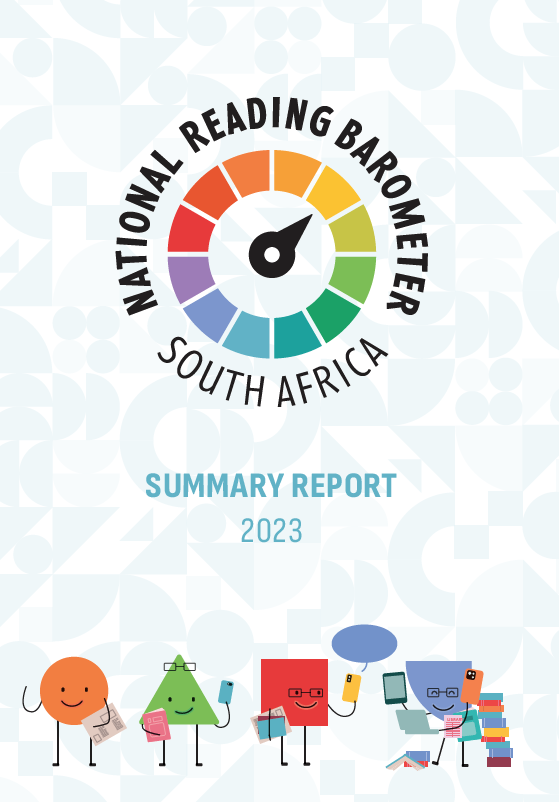
Reading
Ecosystem
The barometer assesses four dimensions of the reading ecosystem:
Reading Ability
Early literacy, primary school reading outcomes, youth literacy and adult literacy levels.
Reading Materials Access
Book ownership, materials access through libraries, the publishing industry, free reading materials distribution and digital access.
Institutional Framework
The policy environment, government and private sector investment in reading, and the education system’s capacity to teach reading.
Reading Motivation and Practice
National Reading Survey findings on adults who self-identify as readers, regularly read for enjoyment and information, regularly read books and regularly read with children.
Each of the Barometer’s 55 measures is assessed against a standard or target and coded as “enabling” (green), “emerging” (amber) or “constraining” (red). Ratings are based on existing sector targets; international comparison to other low- or middle-income countries; equity considerations; and consultation with data owners. Where data is missing, out of date or not yet available, measures are captured as grey. This results in an aggregated assessment for each dimension and for the South African reading ecosystem as a whole.
2023 National
Results
Considering all 55 measures of the National Reading Barometer, the South African reading ecosystem is predominantly “emerging” (46% of measures) and “constraining” (29% of measures), although 16% of measures are “enabling.”

2023 Barometer Results

Reading Ability
South Africa has unequal early learning outcomes and extremely poor primary school literacy, but reaches acceptable levels of basic youth and adult literacy by international comparison. Currently we do not know as much as we would like to about early literacy skills, but new assessments recently launched by the Department of Basic Education mean more comprehensive data will be available in the next few years.
For details on how cutoff points and ratings were determined, download the indicators spreadsheet or read the technical report.
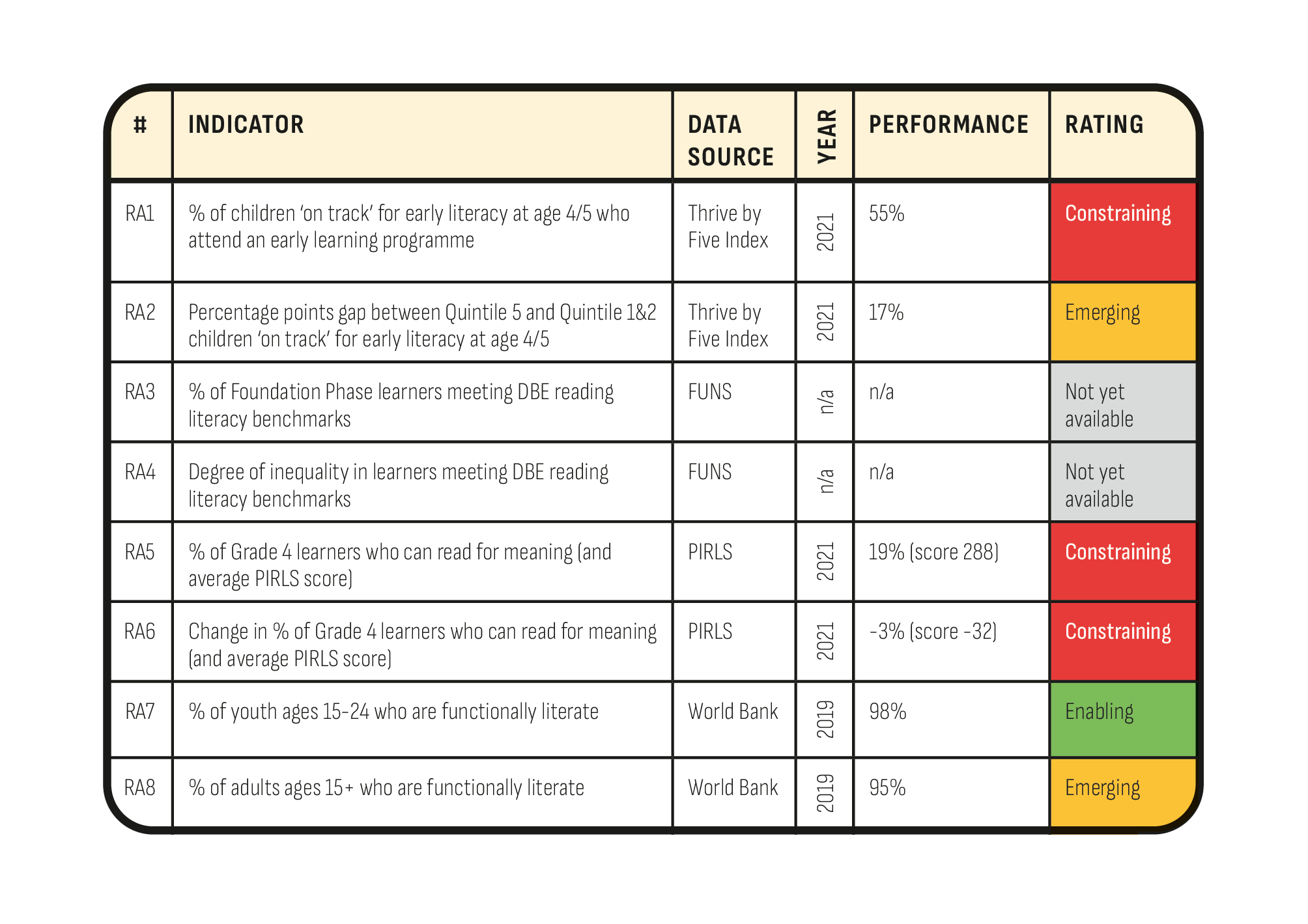

Reading Materials Access
Libraries are an effective but under-resourced public service. The formal publishing industry produces high volumes of materials and is technically skilled, diversified and commercially strong, especially for a middle income country, but producing and distributing reading materials at all affordability levels and for all language preferences remains challenging. Digital access is growing but remains unequally distributed. Most households still do not have any fiction, nonfiction or children’s books, and few have more than 20 books (though this number is growing).
For details on how cutoff points and ratings were determined, download the indicators spreadsheet or read the technical report.
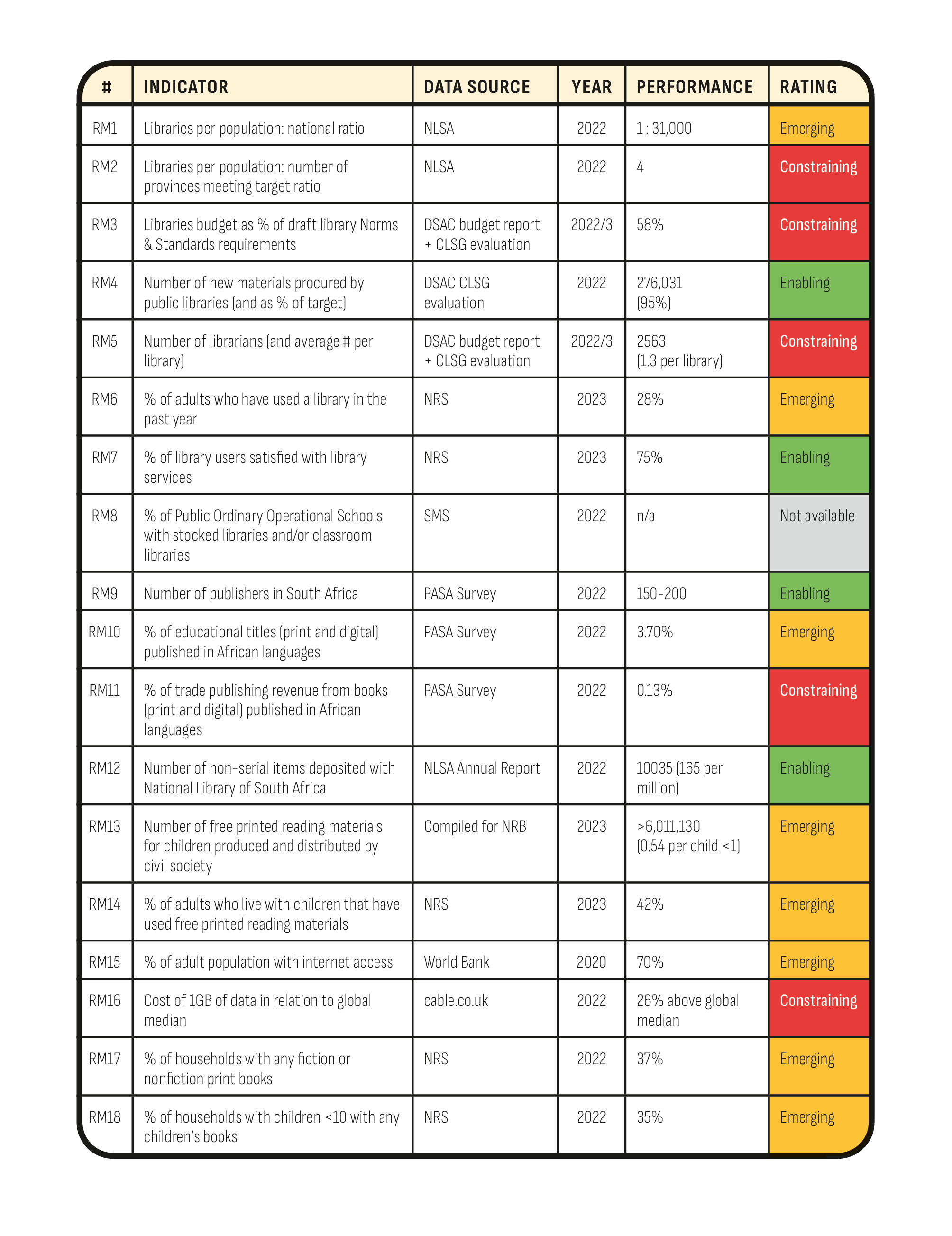

Institutional Framework
While a large share of government and private sector CSI funding is directed towards education, there is insufficient budget for reading and literacy and monitoring budget use is challenging. The policy environment is a mixture of constraining and enabling, with no coordination across policies dealing with schooling, materials, resourcing and equity. A number of policy initiatives have been stalled for years, resulting in a policy vacuum around reading and public libraries. The education system’s capacity to teach reading is highly constrained.
For details on how cutoff points and ratings were determined, download the indicators spreadsheet or read the technical report.
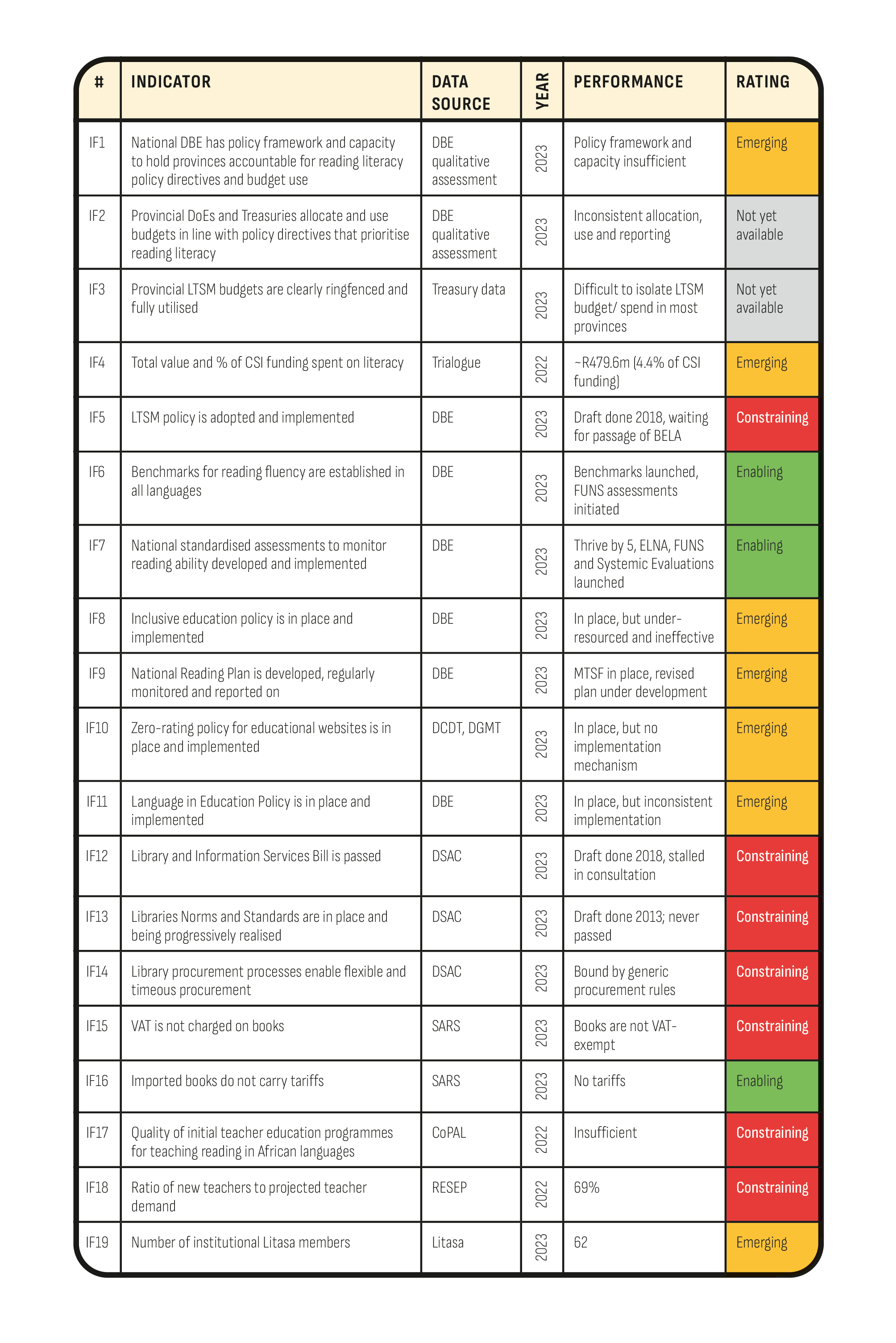

Reading Motivation and Practice
Overall, reading culture is best characterised as emerging. Agreement with positive statements about reading is high, and more adults are reading with children than in 2016, but only around a third of adults identify strongly as a reader or read books frequently.
For details on how cutoff points and ratings were determined, download the indicators spreadsheet or read the technical report.
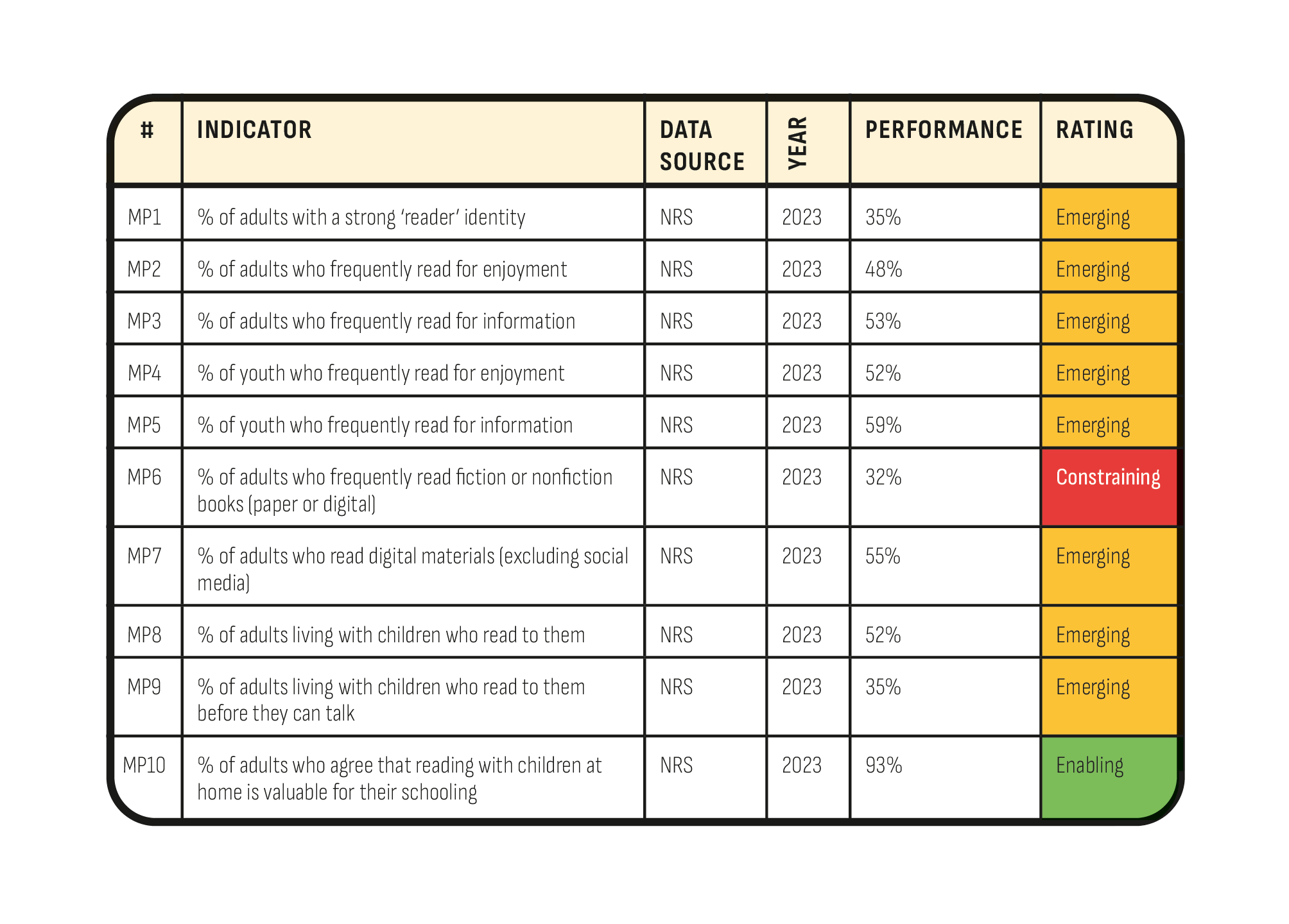
Key Recommendations
Targets
As a literacy sector, set clearer targets for desirable reading outcomes (beyond Foundation Phase reading benchmarks) and clarify collective pathways to achieving those targets.
Data
Consolidate existing data in the publishing and libraries sectors so that budgets, service levels, and spatial and language distribution of materials can be seen and tracked more accurately.
Policies
Re-prioritise and unblock stalled policy processes, including Norms and Standards for Libraries and the Public Library and Information Services Bill; and complete and fund the National Reading Plan currently under development.
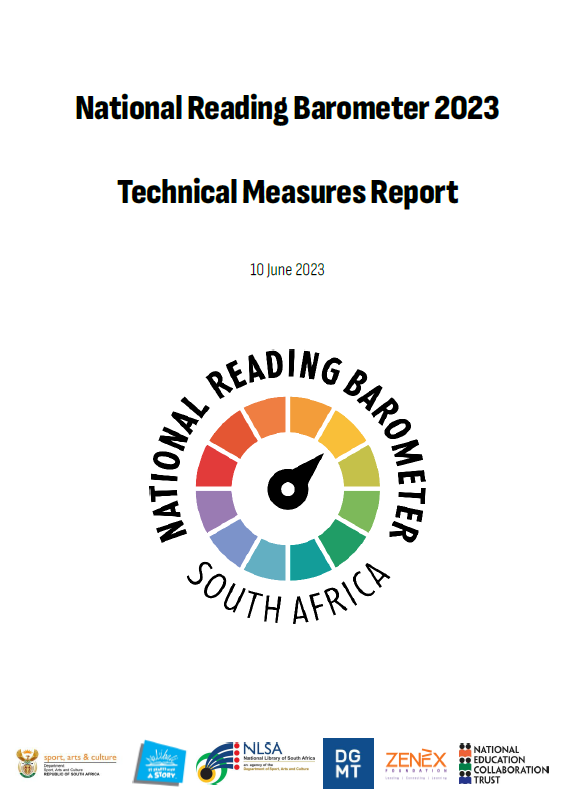
Barometer
Technical Report
For full details on data sources and how each indicator was assessed, download the Barometer technical report.
Download Report